- Home
- James A. Michener
Chesapeake Page 28
Chesapeake Read online
Page 28
“The ax handle would slip.”
“Get one that doesn’t,” she said, and some days later she handed him a carefully sewn bag containing a wad of cloth impregnated with bear grease.
By this time the Indians had removed the branches and were indicating how the ends of the massive trunk should be cut away to permit the molding of the front and rear ends of the canoe. This time Paxmore followed their advice and used fire instead of brute power, and when the twenty-two-foot segment rested beside the creek, he helped the Indians strip off the bark, disclosing a golden object so handsome that it already seemed half-canoe.
By flattening the side that remained on top, he achieved the rude outlines of what he sought, and then, while his Indians set fires to burn away the insides, he proceeded to that difficult task which he must master if he wished to become a boatbuilder: at each end of the log he began to hack away with an adze the unnecessary portions of wood. Working with extreme care, and never cutting away even a fragment until he was satisfied that its departure would enhance the curve of the canoe, he learned how the bow and stern of a boat should evolve naturally from the flow of the wood until each became suited to life in water. This technical skill he could master because he was a good house carpenter, but the intellectual trick the Indians showed him when the nearly finished canoe was rolled over, he could never have deduced himself, and it was this unexpected discovery which enabled him to become a master shipbuilder.
When the great hollowed-out log lay top down at the edge of the water, one of the Indians took a straight piece of timber and with an oyster shell drew a line down the length of the canoe two inches off dead center. Then, using the same implements, he drew a parallel line two inches to the other side of center, and when this was done he and his friends began to scrape away small fragments of oak along the outer edges of this four-inch center area, and after many hours of patient work, and the smoothing down of unwanted wood, they left a slightly raised backbone for the canoe, and Paxmore saw that this would always be the lifeline of the craft. It would give direction and stability; it would keep the canoe from drifting sideways when blown by wind; and it would serve as protection to the rest of the bottom when the canoe was hauled ashore.
In his personal life Edward Paxmore had discovered that à man lived best when he maintained some central belief upon which he could hang all action and to which he could refer all difficult moral problems; he was then vertebrate, with a backbone to sustain him, and he had observed that men and women who failed to develop this central belief wandered and made hideously wrong decisions because in time of crisis they had nothing to which they could refer instantaneously. He had found his backbone in obedience to God, in the simplest form possible and with the most direct access.
He now discovered that a boat also must have a backbone, a central structure of the greatest possible strength that ran the length of the craft without deviation and upon which all the rest depended. During the remainder of his life he would never construct a ship without a backbone of oak; upon this central and immutable fact he would build.
The canoe, with its two masts, was such a success that settlers along the river offered to buy it, but as he told Ruth, “I haven’t the strength to keep chopping down oak trees, nor the time to burn them out inch by inch.”
“Thee would if thee used the bear grease I gave thee,” she said.
What he could do, he saw, was encourage others to cut down oaks and pines and fashion planks from them, which he would then assemble into small boats. But no sooner had he jumped optimistically into this new field than he discovered that building a boat with planks was a task infinitely more difficult than hollowing a log; problems arose which were almost impossible for an ordinary house-builder to solve. This was the enigma: lay out on a flat piece of ground a backbone of the length desired. To it attach ribs which form more or less the outline of the finished boat. So far so good. But now cut planks which can be attached to those ribs to form a watertight body which at the same time flows softly forward and back to form the bow and stern of the craft. It sounds easy; it is cruelly difficult to do. And when by chance and the blessing of a patient God you master the trick of cutting those planks, how do you secure them fore and aft to the bow and sternpost?
Many residents along the river complimented Paxmore on his canoe, but he realized that the merit was not his; the inherent nature of an oak tree had determined the general form the canoe would take. In building his first craft he couldn’t have gone wrong, because the oak wouldn’t let him. But in building a small boat, his planks of sawn timber would have no inherent form. He would need a clear concept of what he wished to accomplish, and he had none. So when his first rude boat was finished, no one stepped forward to bid on the monstrous thing; indeed, it barely stayed afloat, and when the sails were raised, it proved unmanageable. The only thing in its favor was the stalwart backbone; the subsidiary parts that determine quality were a mess.
He knew it. “Look at that thing I call a boat,” he said to Ruth as it lay tied up to their wharf. “A child could do better.”
“Dearest,” she said with that fearful simplicity which would enrage so many, “when it comes to building a boat, thee is a child.”
So he determined to start over again as if he were indeed a child learning a totally new skill, and he studied his mistakes, seeing how he had asked wooden planks to perform jobs for which they were not fitted, but always he came back to the great fundamental: lay a solid backbone and see that everything relates properly to it.
He began with a much less pretentious craft, shorter and narrower in the beam, and spent all his time not on the flashy midsection, but on the bow and stern, agonizing over how he could bring all this planking to a finely shaped point, and when he finished he had a boat which didn’t look especially attractive, for it had crudities innumerable, but which did sail. This time a man wanted to buy it.
“I’m going to build three more,” he told Ruth, “and the last one I’m going to name the Ruth Brinton. That one will be very good.” And when the last caulking was hammered home he invited Ruth for a celebratory sail, but as they reached the center of the Choptank he said impulsively, “We’ll stop at Devon.” She protested, “Not in this dress.” She made him return to Peace Cliff and wait till she had donned her best gray cloth and the little Quaker hat that accompanied it; but now when she sat beside her gangling husband he seemed so out of place that she said, “Thee must dress also. It is the Steeds we’re seeing,” and she would not allow him to untie the boat until he had changed.
They looked so proper as they sailed up Devon Creek, he tall and uncomfortable in the new suit she had woven, she prim and tidy with her hands folded, that servants alerted the Steeds, who brought their families to the wharf. “What a fine boat!” Henry said, and he indicated that Paul should jump down to see if the fittings were as solid as they appeared. When Paul nodded, Henry said, “Alice, why don’t you take Mrs. Paxmore up to the house for tea. We’re going for a sail.”
They went down the creek and out into the Choptank and finally the bay itself, with Paxmore tending sail and looking formal in his new suit and flat Quaker hat. When he brought the boat back, with Henry at the tiller, the Steeds were satisfied that this Quaker carpenter had mastered the art of building boats.
“I think we’d better have a drink,” Henry said as they climbed out of the Ruth Brinton.
“I don’t drink,” Paxmore said.
“Not even tea?”
The carpenter laughed, and when they joined the ladies there was no talk of boats, because Mrs. Steed grabbed hold of Paxmore and told him excitedly, “It’s all arranged! You’re to stay here for three days with this wonderful woman”—and she indicated Ruth—“and build me a special cupboard ... here ... for these.”
And she pointed to a nearby mantel on which stood, in orderly arrangement, a set of handsome pewter dishes, cups, knives and spoons. “These are the lares and penates of the Steeds,” she said.
&
nbsp; Paxmore’s blank look indicated that he didn’t know what she was talking about, but before she could explain, Ruth Brinton cut in with, “Their household gods. It’s a Roman phrase.”
Now Paxmore looked quizzically at his wife, as if the pagan gods to whom she had referred were blasphemous, but Ruth smiled primly and said, “It’s all right. Just means they’re precious to the Steeds.”
He relaxed and asked Mrs. Steed, “What kind of closet had thee in mind?”
“Here in the corner. Covered with this piece of glass we’ve just received from Holland.”
“That could be quite handsome,” he said as he studied the corner and the fine length of glass. “Thee would want about six shelves?”
“We’ll have to judge that as we proceed,” she said. Then handing each of the Paxmores a piece of pewter, she confided, “Grandmother Steed loved this. Once a year for as long as she lived she would serve a meal of deliverance. No glass or china, only the precious old pewter pieces. She did it to remind us of how they had lived in the difficult days.”
Paxmore, feeling the heavy ware, thought that a cupboard to conserve such pieces would be most sensible. “I’ll do it,” he told Mrs. Steed.
In the days that followed he and Ruth had their first opportunity to see a Catholic family at close quarters. Many aspects surprised the Quakers: the voluble prayers before meals instead of the solemn quiet of a Quaker family, the substitute for the Mass in which all members participated, the different Bible, and the perilous approach to paganism in their talk of saints and holy objects. They were particularly impressed by the tales of Father Ralph and his obvious sanctity.
“I think I would like Ralph,” Ruth said, and Paul replied, “He never has much to do with women. He’d find you quite disturbing.”
“Why?” Ruth asked.
“Your outspokenness. Your willingness to participate in everything.”
“That’s the Quaker way,” she said, and Paul replied, “I know, and that’s what Ralph would find disturbing. In his church women don’t ...” He found no way to finish his sentence, but Ruth, unwilling ever to let a challenge pass, said, “In ours they do.”
The Steed brothers found it easier to talk with Edward Paxmore, and one day while the women were admiring the distinguished manner in which the finished cabinet displayed the pewter, they took the carpenter aside and Henry, after coughing twice, said, “Edward, I think you’re ready to build us a ship.”
Paxmore never replied to any invitation in a hurry, and while the brothers waited he calculated how many hours it might take him to build a replica of the Ruth Brinton. “I believe I could build thee a boat like the Ruth Brinton—”
“We don’t mean a boat, we mean a ship.”
Paxmore was amazed at the proposal. “You mean ... a great ship ... to cross the bay?”
“To cross the Atlantic,” Henry said, and once the words were out he became a persuasive visionary. “Paxmore, if we owned a ship, we could send our tobacco directly to market and save enormous sums on rentals. We could return with goods for the stores at prices you wouldn’t believe.”
“But I’ve never—”
“We’ve watched your progress in your last four sailing boats. You’ve come a far way, Paxmore.”
“That first was a bad job, wasn’t it?”
“And we’re convinced you’re ready to build us a ship for London.”
“I’ve never built a ship,” Paxmore said quietly. “I’ve never learned.”
“A man learns how by building it.”
What Paxmore said next proved that he was a true and cautious Quaker: “Would thee risk thy own money in such a venture?”
“We would,” the brothers agreed.
Paxmore sat silent for a long time, then rose soberly and returned to the room where the ladies were. Walking directly to his wife, he took her by the hand and said, “Ruth, we’re going home ... to build a great ship.”
Edward Paxmore was driven into an extended period of moral confusion through no act of his own; it was Samuel Spence’s fault. That Barbados ship chandler never forgot that when his helper Paxmore sailed precipitately for Maryland because of looming pirate threats, he departed without having collected the wages due him, so in late 1666 Spence posted a letter, which, when it reached Peace Cliff, would cause the trouble.
In the meantime the lanky carpenter was adhering to the tradition of shipbuilders in early America. He did not establish an arbitrary yard and say, “Here I will build my ship.” Instead he looked for a concentration of tall trees and there set up his works. The spot he selected was on the creek, close to where he had built his log canoe; it contained one of the most promising oaks he had ever seen, a giant in the sky, plus a substantial supply of pines. So one morning after praying for guidance and good health he started to fell the oak upon which his ship would depend.
With sweating toil he and his Indians swung their axes, and when at last the massive tree dropped close to the creek as planned, he stepped off the fifty-two feet he had decided upon for the backbone; but when he saw how vast a distance this was, he pressed his aching hands against his chest and thought: I can never build a ship of that size. But he was committed and knew that he would succeed only if he proceeded one careful step at a time. Accordingly, he began to chop away the branches, some as large as ordinary trees, and when the massive log lay exposed he studied it for two long days, trying to visualize the finished backbone that he would chop from it and the various ways in which the great body of the ship would relate to it.
With each crucial analysis he realized how ignorant he was, and on the morning of the third day, when he should have begun chipping away unwanted wood, he was paralyzed by self-deprecation. This task was too immense for a house carpenter. But as he sat upon the felled oak, he happened to see riding in the creek his original log canoe, and he asked the Indians to help him haul it ashore. Turning it upside down on the grass, he sat all morning studying the lines, and the subtle manner in which straight expanses of wood merged with round, and how various segments combined to form bow and sternposts, and from this most ancient of shapes, dating back ten thousand years or more, he began to appreciate what could be done and what must be done.
Halting all work except the felling of pine trees, he took a piece of pine and started to whittle a model of the large ship he wished to build, and on this task he spent the better part of two weeks, shaping here and retouching there until he had a miniature craft entirely pleasing to the eye.
But still he lacked confidence, so he had his Indians put the upturned canoe back into the water and in it he sailed to Devon to show the Steeds what he had in mind. As prudent men looking to the future, they had but one suggestion: “If you make the ship broader at the midsection, it will be able to carry more goods.”
“The bulk would make it sail slower,” Paxmore pointed out.
“We have endless time,” Henry said, and Paxmore attached to the sides of his model thin strips of additional wood, which enabled him to carve a fatter form. When this was completed Henry Steed took a pen and lettered on the stern the name the ship would carry: Martha Keene, Devon.
“When the whole is done,” he told Paxmore, “I’d like to have that model.”
“Thee shall,” the carpenter said, but on the sail back to his informal boatyard he had a beneficial insight: If I cut the model in half, lengthwise, I’ll have not only a plan for the outside of the ship, but one for the inside, too. So when he reached the waiting oak he wedged the model into an informal vise and took down his saw, but when he started to make his cut he saw that to do it properly he must rip the backbone into halves, and this he was powerless to do.
Throwing down the saw, he thought, I could never split a backbone, and he pondered an escape, and gradually he uncovered a satisfactory compromise: I’ll not touch the backbone. I’ll saw alongside it, and this he did, producing not the true half-model required, but a workable approximation, and whenever he used this guide his fingers felt the unvi
olated backbone, and he was gratified.
Now he started his men hacking away at the oak, and as they worked he made a decision that would save hours of complex labor: The back of the ship will not be pointed. It will be flat.
He then moved to the other end, and here he faced problems of the most acute and perplexing nature: how to hook upon the fore end of the backbone the front end of the ship, which required a rising curve. While the Indians worked squaring away the long reach of the spine, he concentrated on this problem, and saw that if he could shape the forward end of the log into an upward curve, however slight, he would start with an advantage. So quickly he redirected the cutting so that the forward end would achieve the maximum upward sweep. He was not able to gain much, but when the backbone was finally finished, it did curve upward, and on this advantage he would erect the crucial forward thrust of his ship.
But with each success new problems evolved and now he must determine the precise manner in which the bow of his ship, the cutting edge which would breast the waves, would be put together. He had not the slightest instruction as to how this could be accomplished. He was a house carpenter, but like any prudent man he could sit down and apply what he knew about houses to ships, and the crucial fact he clung to was that an open rectangle could never be stable, because sufficient pressure at any one of the corners would collapse it, whereas a diagonal, if hammered securely into position, would permit enormous pressures to be exerted on the corners without collapse; the resulting triangles might break apart, or the wood might shatter, but they were stable.
Abstractly, the problem was simple: crisscross the interior of the ship with diagonals and no storm would ever be able to collapse its sides; of course, no cargo or passengers could be loaded either, because the interior would be consumed with diagonals.
So the problem really became this: how to achieve the rigidity of the diagonal without using ones which would prohibit the loading of cargo? Like most important difficulties, it was easily stated, laboriously solved.

 Mexico
Mexico The World Is My Home: A Memoir
The World Is My Home: A Memoir Sayonara
Sayonara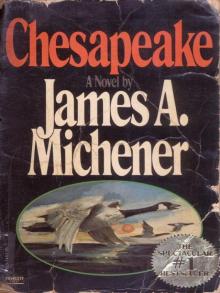 Chesapeake
Chesapeake The Novel
The Novel Rascals in Paradise
Rascals in Paradise Return to Paradise
Return to Paradise Presidential Lottery: The Reckless Gamble in Our Electoral System
Presidential Lottery: The Reckless Gamble in Our Electoral System The Source
The Source Poland
Poland Space
Space Caravans
Caravans Creatures of the Kingdom: Stories of Animals and Nature
Creatures of the Kingdom: Stories of Animals and Nature Iberia
Iberia Hawaii
Hawaii The Watermen: Selections From Chesapeake
The Watermen: Selections From Chesapeake Report of the County Chairman
Report of the County Chairman The Covenant
The Covenant The Bridges at Toko-ri
The Bridges at Toko-ri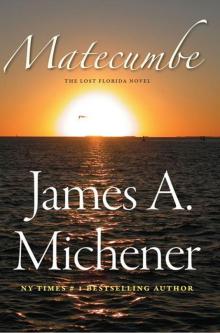 Matecumbe
Matecumbe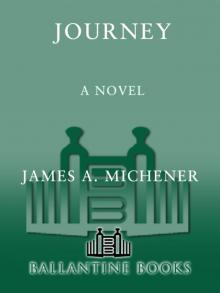 Journey: A Novel
Journey: A Novel Centennial
Centennial Sports in America
Sports in America Texas
Texas Miracle in Seville
Miracle in Seville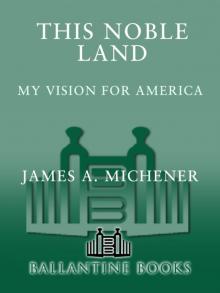 This Noble Land: My Vision for America
This Noble Land: My Vision for America Tales of the South Pacific
Tales of the South Pacific Bridges at Toko-Ri
Bridges at Toko-Ri Space: A Novel
Space: A Novel Presidential Lottery
Presidential Lottery Sayonara: A Novel
Sayonara: A Novel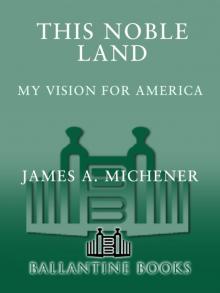 This Noble Land
This Noble Land The Covenant: A Novel
The Covenant: A Novel Miracle in Seville: A Novel
Miracle in Seville: A Novel The Bridge at Andau
The Bridge at Andau Source
Source The Source: A Novel
The Source: A Novel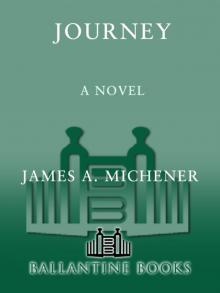 Journey
Journey Recessional: A Novel
Recessional: A Novel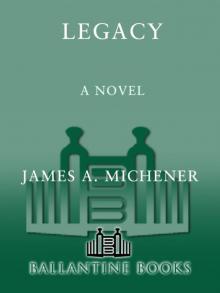 Legacy: A Novel
Legacy: A Novel The Bridges at Toko-Ri: A Novel
The Bridges at Toko-Ri: A Novel Poland: A Novel
Poland: A Novel